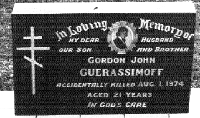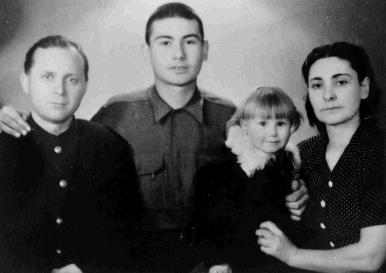TTS News & Almanac
No.5
12 June 1997This newsletter is written as an update on the progress of the Turn the Soil exhibition for artists and fellow travellers. It will be produced between each venue.
The Gladstone – Port Pirie leg
Due to circumstances beyond the curator’s control, this newsletter tends to be more impressionistic than usual.
Crate work
Turn the Soil
has passed the first, critical test. The works arrived at their inaugural venue, intact. During the exhaustive condition reporting, I was unable to discern a single scratch on any of the works. This is largely due to the diligence of the crater, Don Walters, whose superbly fitted boxes guarantee that the works travel in comfort, and the crew from NETs, including Mae Adams and Sandy Saxon who wrapped the works with great craft. There are probably too many crates at this stage, and we will work on reducing their number when they pass by Melbourne on their way to Port Pirie.Gladstone
Gladstone turned out to be a bit of a surprise. Wet and cold during most of my stay, the town seems to have cleaned up a lot of the pollution from the aluminium industry nearby. The Director of the gallery, Pamela Whitlock, does a great job keeping the show going, almost single-handedly. The recent death of an ex-volunteer meant that we were without assistance during much of the installation and had to work into the small hours. She had quite a rare dedication.
A Russian Australia turned out to be quite fortuitous choice. In idle conversation, the gallery secretary described someone in the local council as quite a ‘Tartar’. It seemed an unusual expression in its context, but was exactly the premise of the Russian scenario (what might have happened to the Russian spirit if it was freed of the Tartar yoke, placed by Genghis Khan and retained by authoritarian regimes). But this was a minor diversion from the main plot.

Guerassimoff
A couple of years ago I was in Gladstone installing an exhibition titled Symmetry. A stroll through the cemetery revealed a collection of Russian graves. The name Guerassimoff stood out. Puzzled at its presence in a quintesentially Aussie town, I inquired about the Russians and was told that a community of Russians lived in a town close by, called Yarwun. Imagining a Amish-style community, I made a brief visit and tracked down a Guerassimoff, Alex, who was working at the local store. He told me quite casually the story of his family, how they had escaped the Russian revolution by fleeing to Manchuria and then to Australia, where they established a pawpaw plantation. A little further exploration uncovered an inconspicuous Old Believer’s church and graveyard, tucked away in the bush.
Dobrinnan
This time around, I hoped to meet up again with Alex. It didn’t quite happen like that. Instead, I met Marguerita Dobrinnan (on right in photo below), a great supporter of the gallery, who runs a local craft shop and happens herself to be a second-generation Russian. Marguerita introduced me to her mother, who took time off from making pastries for the opening to tell me her story.
It was a complex tale filled with many detours, reflecting the skaz tradition of Russian story telling. The most dramatic episodes occurred during the Japanese occupation of Harbin, the city where Russians lived in exile. Forced to work under conditions of starvation, Emelia with husband and son relished the opportunity to migrate to Australia. Though of Catholic background, their sponsors in Australia were Orthodox—the Guerassimoff family. Before he left China, Emelia’s husband had his fortune told and it was revealed that he would die by drowning. Though avoiding any swimming and fishing excursions, he met his fate at the bottom of a creek during a monsoon-like rainstorm.
Her story, and those of other Russians who came to Australia via Manchuria, would lend itself well to novel form. Emelia’s son married a woman who now publishes a magazine devoted to the history of Russians in Australia and they are likely to publish the story of Yuzhem from the ‘Off the Beaten Track’ workshop.

‘It’s all part of the rich tapestry of life’ is usually said ironically, but there are times when the modern history of Australian does really seem like a tapestry. You can follow any one of those threads as it tacks its way through the different events that cross its path.
Opening
Due to a series of unfortunate circumstances, there was only a small attendance at the opening. The funeral that day of an ex-volunteer, an unseasonable downpour and the annual fashion parade put a dent on numbers. Regardless, the visitors assembled made the most of the homemade delicacies and wine available.
The mayor of Gladstone, Peter Corones, opened the exhibition by drawing on his own Greek background to speculate on a Hellenic Australia. His picture of octopus hung up to dry around the marina tickled those present. The chairperson of the gallery board took the opportunity of a dig at Pauline Hansen, which is salutary for southerners who stereotype the banana benders as rednecks.
Yuzhem (excerpt from the web site)
‘What America was to England, Yuzhem was to Russia. Religious dissidents, suspicious of churchly ways, sought sanctuary in the new world. Unable to fend for themselves, they invite an ungodly pretender to rule over them. His rule is predicated on its illegitimacy.
The Old Believers of Yuzhem stand for the unchanging truths, principally nature and God. Their nation is split between the Mikhailovites, who stand by timeless traditions, and the Constantines who look outside to the forces of change.’
Yuzhem turns out to be a way of exploring Australia as a blank slate for tired nations to realise a potential hampered by traditions. Just as Australia allowed English perseverance to thrive outside the class system, so in this story is expressed the Russian spiritual intensity without the heaviness of political authoritarianism. It also gave shape to the lost opportunity for Australia to share the kind of pilgrim-like zeal of New England. With the absence of human sacrifice, it was a more palatable story than Shukkinak, though it shared a yearning for a colonising people who might express more confidently their spiritual relationship to the land.
Online
A large amount of material has been added to the Turn the Soil site since the last newsletter. As well as images from the supper and a curator’s tour through the RMIT installation, the Shukkinak scenario has attracted a number of striking stories from a Perth woman who came across the site. They really add flesh to the scenario and I recommend a read if you visit.
Upcoming
Next stop is Port Pirie, and the planned scenario is the Japanese in Australia. South Australia has invested heavily in the model of Japanese manufacturing, particularly the Mitsubishi plant, and this will be an opportunity to explore this further.
Vietnam
H¶ nh Ngô is currently visiting her birthplace in Vietnam. From a postcard, it seems she is taken aback by the speedy pace of life there.